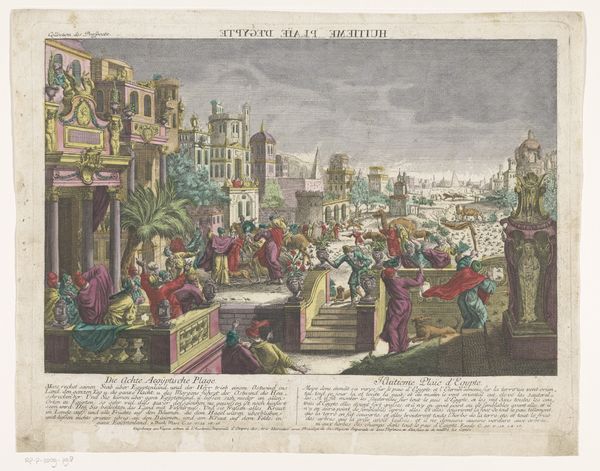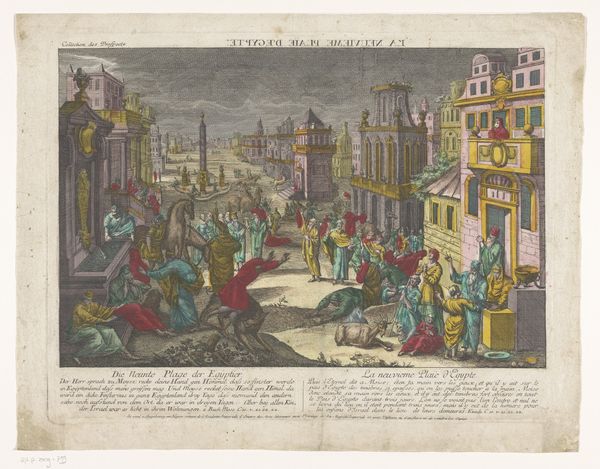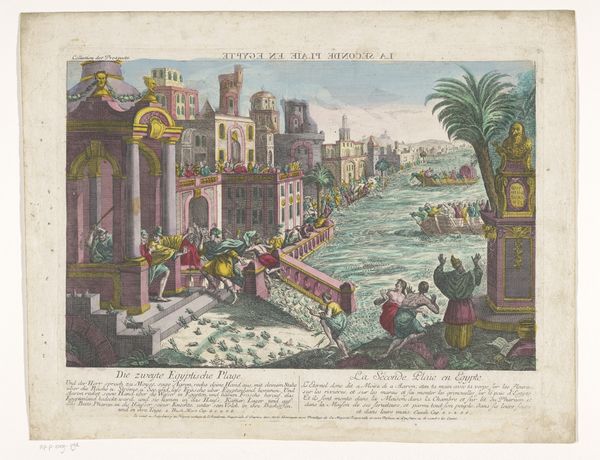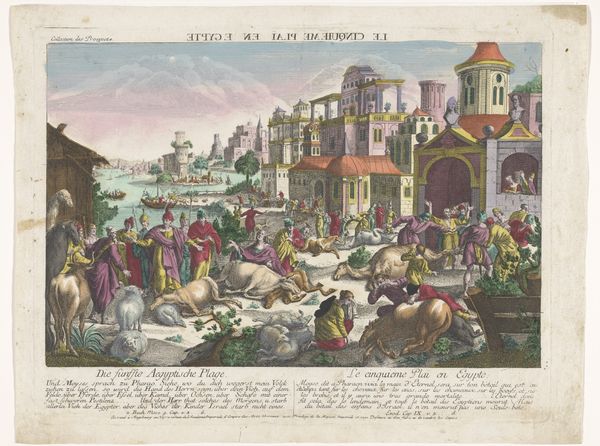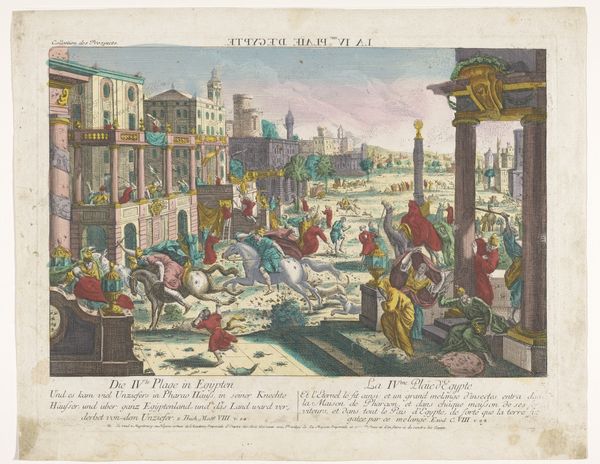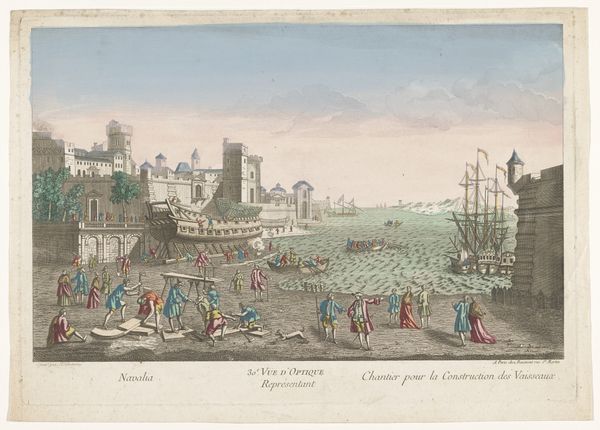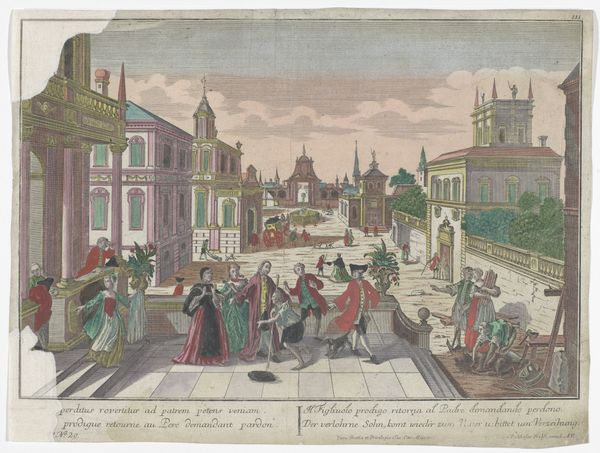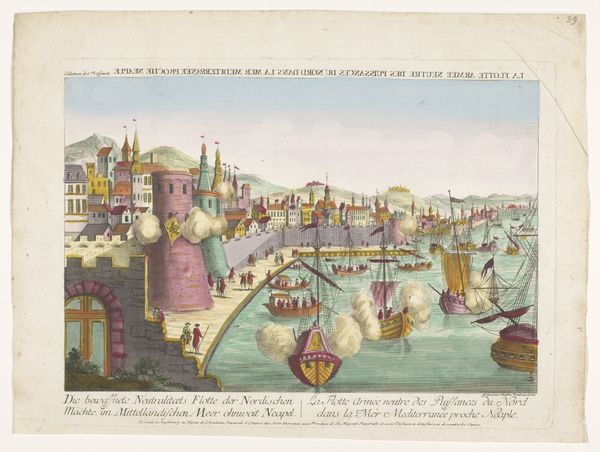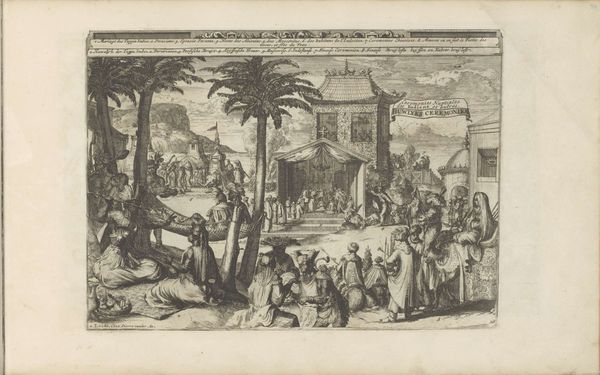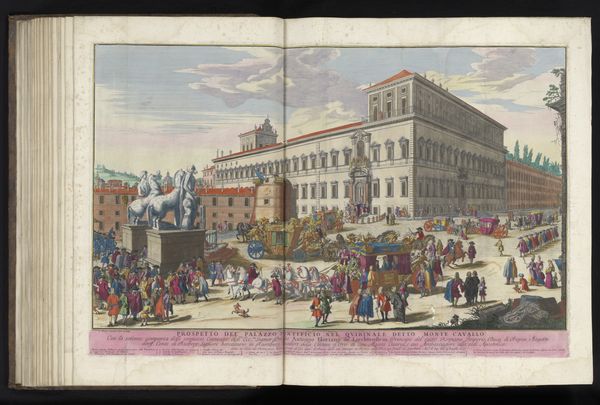
Dimensions: height 333 mm, width 433 mm
Copyright: Rijks Museum: Open Domain
Curator: This is an engraving entitled "The First Plague of Egypt" rendered sometime between 1755 and 1779. It currently resides here at the Rijksmuseum. What are your initial thoughts? Editor: The crimson water dominates. It's visually striking, unsettling even, how this idyllic cityscape is disrupted by the plague’s manifestation. A city beside a river becomes the stage of disaster and the population reacts, almost in pantomime. Curator: Well, consider the period. These prints served a purpose – disseminating information and moral lessons to a broad audience, not necessarily aiming for realism but for didactic impact. Look at how the figures are posed and grouped, almost theatrically. It is as though we're witness to the performance of affliction. Editor: That theatricality also makes me uneasy. The plague is represented in a distanced, almost aestheticized manner. It makes one think of the hierarchies at play – who gets to experience or be impacted, while others only observe or render. I suppose the sublime tradition of the time encouraged distance, which makes suffering more tolerable for viewers who probably did not suffer to the degree shown in the piece. Curator: Absolutely. Remember, prints like these often reinforced existing social structures. Divine intervention punishing a nation aligns with justifications for societal hierarchies, especially regarding faith and obedience. Editor: It provokes contemplation on the visualization of catastrophe, and the role of power in dictating how such events are perceived and internalized. Are we truly considering the lives and perspectives of those submerged in the "red river"? It’s a good reminder that history paintings always deserve scrutiny. Curator: Indeed. The image speaks volumes about 18th-century values and beliefs. Editor: And it pushes us to interrogate the ethical dimensions of representing human suffering.
Comments
No comments
Be the first to comment and join the conversation on the ultimate creative platform.

